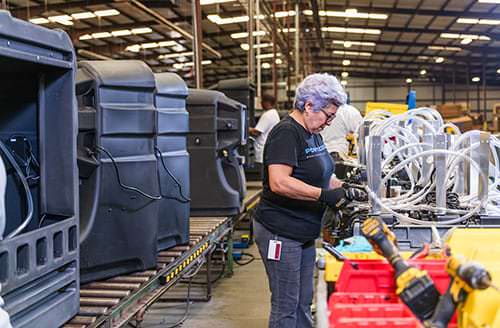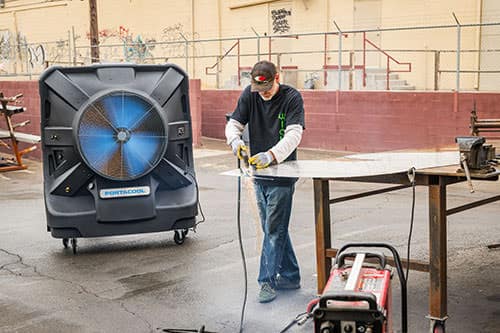
Record-setting high heat temperatures and marked warmth has been on the rise since 2015. Beyond being uncomfortable, extreme heat presents a real danger to workers in a variety of occupations. Less than a decade ago, the Occupational Safety and Health Administration (OSHA) launched a formidable campaign to raise awareness among employers and employees about the dangers of heat on the job and spell out the key details for prevention. The campaign, still used today, highlights three easy-to-remember words to give the simplest instruction for mitigating heat issues: “Water. Rest. Shade. Keeping Workers Safe in the Heat.”
The agency directly notes that under OSHA law employers are responsible for providing safe workplaces that are free of safety hazards, which includes protection from extreme heat. OSHA further says that “An employer with workers exposed to high temperatures should establish a complete Heat Illness Prevention Program (HIPP).” Since the inception of its heat illness prevention campaign, OSHA has maintained that an employer with a hot working environment must have a HIPP to stay in good standing with the agency.
In 2019, OSHA came under fire from more than 100 groups (led by Public Citizen) banding together through a written petition to the  head of the Department of Labor. Their concern? OSHA had not established a federal heat stress standard. To date, OSHA issues employer citations relative to heat injuries and deaths based on the ‘general duty clause’ (to maintain a safe workplace for employees) versus having a specific regulation and standard for the practice of heat illness prevention. The joint petition maintained that OSHA has an obligation to “prevent future heat-related injuries, illnesses and fatalities by issuing a heat stress standard for outdoor and indoor workers.”
head of the Department of Labor. Their concern? OSHA had not established a federal heat stress standard. To date, OSHA issues employer citations relative to heat injuries and deaths based on the ‘general duty clause’ (to maintain a safe workplace for employees) versus having a specific regulation and standard for the practice of heat illness prevention. The joint petition maintained that OSHA has an obligation to “prevent future heat-related injuries, illnesses and fatalities by issuing a heat stress standard for outdoor and indoor workers.”
Based on the Bureau of Statistics, from 1992 to 2017 it is noted that more than 815 workers died and 70,000 were seriously injured by heat stress. What complicates heat death statistics even more is that the cause of death can be misclassified by underlying health issues or another common diagnosis – like a heart attack. These facts culminated the underlying concerns in the petition.
According to an EHS Today article, OSHA lawyers note the agency thoroughly investigates heat-related incidents. The agency continues to advise companies to review their HIPP to ensure it adequately complies with OSHA standards for employee safety and enact plans AHEAD of the hot season. They take note that, given heat waves come at unpredictable times, it is important to be prepared so workers are not left in a perilous situation in the case of unexpected heat. That early review and prevention ahead of typically hot weather is key to keeping workers safe. The article reminds employers to have a HIPP that satisfies OSHA recommendations by including the following elements:

All of these components are key to creating an effective HIPP. They will especially be important should OSHA create a national standard relative to worker heat safety. The push to develop a specific OSHA standard and mandate relative to heat safety led to a July 2019 proposed piece of legislation. According to Public Citizen’s article:
“The Asunción Valdivia Heat Illness and Fatality Prevention Act (H.R. 3668), named after Asunción Valdivia, was introduced in Congress by U.S. Reps. Judy Chu (D-Calif.), Raul Grijalva (D-Ariz.), Alma Adams (D-N.C.) and members of the U.S. House of Representatives Education and Labor Committee to prevent heat from claiming more lives. The legislation directs the U.S. Occupational Safety and Health Administration (OSHA) to develop national protections for workers exposed to high heat.”
Given the legislation has not made it past the introduction phase, we will continue to monitor the status. In the meantime, it is important to proactively follow the tips given to ensure workers are provided with a safe workspace that prevents heat stress that leads to more severe heat illness and complications.